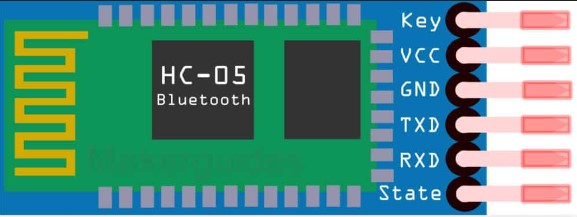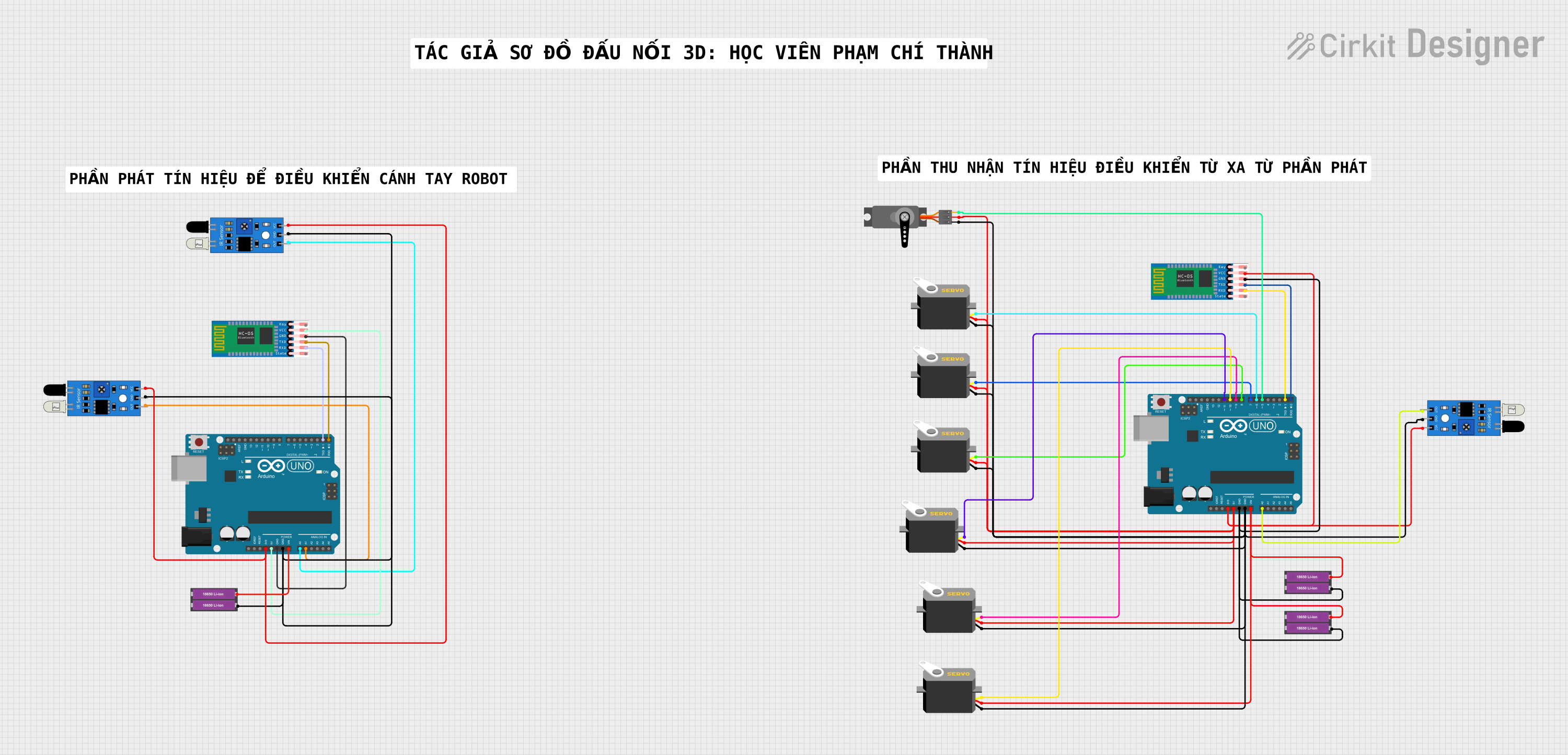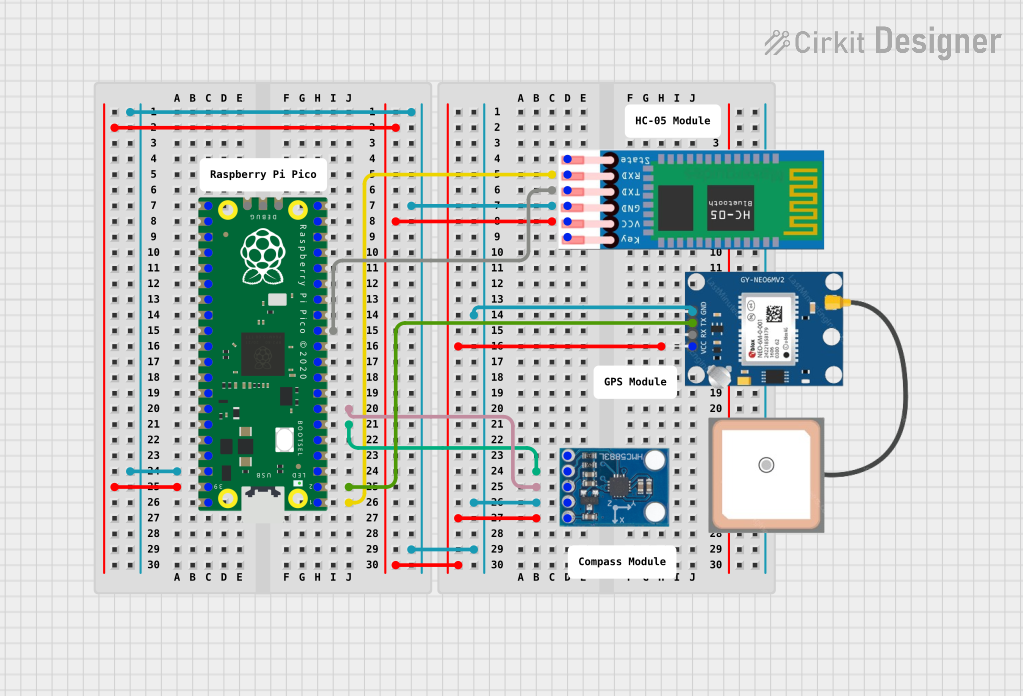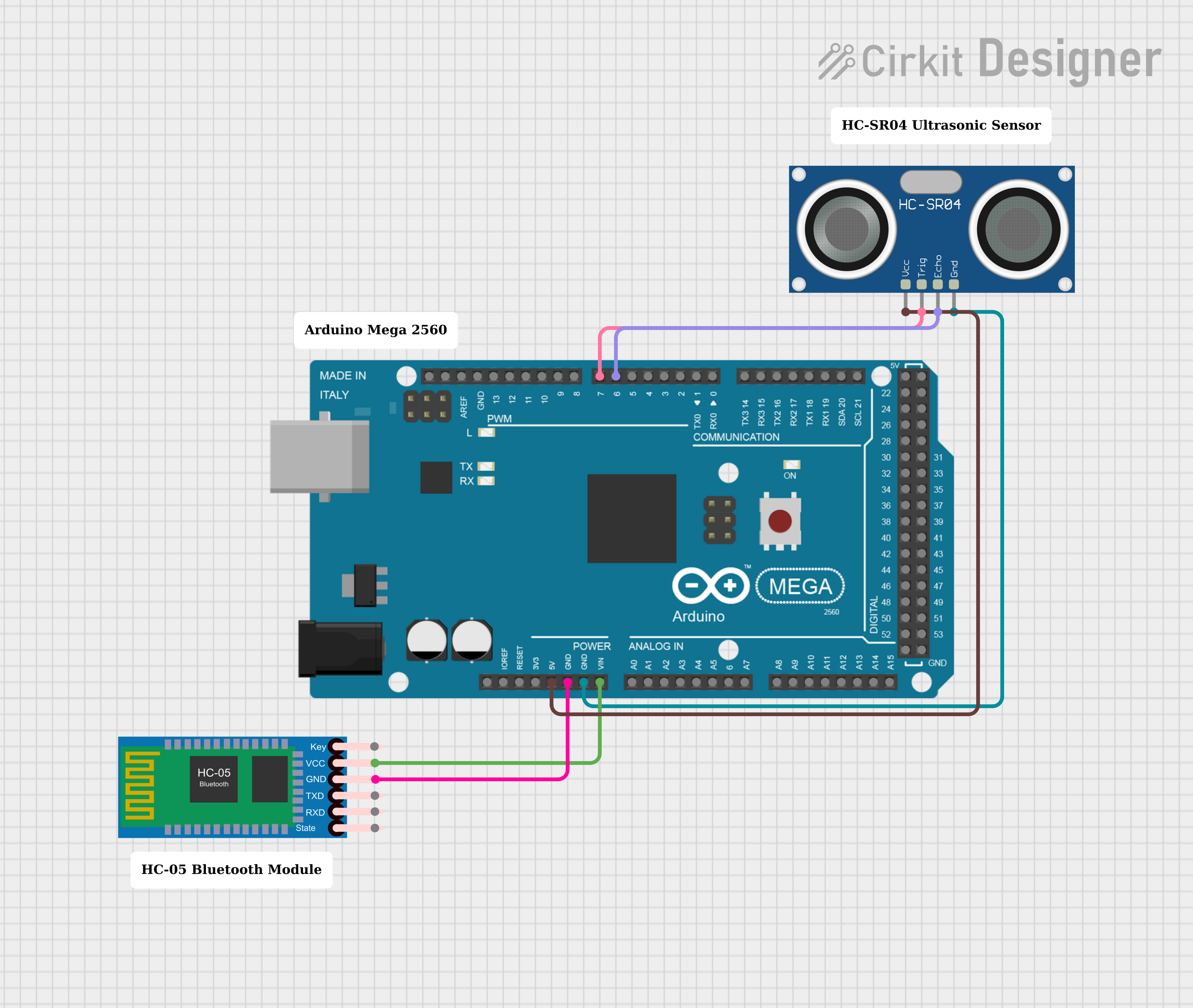
How to Use Hc 05: Examples, Pinouts, and Specs

 Design with Hc 05 in Cirkit Designer
Design with Hc 05 in Cirkit DesignerIntroduction
The HC-05 is a versatile and powerful Bluetooth module that enables wireless communication between devices. It operates on Bluetooth 2.0 technology and can serve as both a master and a slave device. Common applications of the HC-05 include wireless control systems, serial communication, and remote data logging.
Explore Projects Built with Hc 05

 Open Project in Cirkit Designer
Open Project in Cirkit Designer
 Open Project in Cirkit Designer
Open Project in Cirkit Designer
 Open Project in Cirkit Designer
Open Project in Cirkit Designer
 Open Project in Cirkit Designer
Open Project in Cirkit DesignerExplore Projects Built with Hc 05

 Open Project in Cirkit Designer
Open Project in Cirkit Designer
 Open Project in Cirkit Designer
Open Project in Cirkit Designer
 Open Project in Cirkit Designer
Open Project in Cirkit Designer
 Open Project in Cirkit Designer
Open Project in Cirkit DesignerTechnical Specifications
Key Technical Details
- Bluetooth Protocol: Bluetooth Specification v2.0+EDR
- Frequency: 2.4GHz ISM band
- Modulation: GFSK (Gaussian Frequency Shift Keying)
- Emission Power: ≤4dBm, Class 2
- Sensitivity: ≤-84dBm at 0.1% BER
- Speed: Asynchronous: 2.1Mbps(Max) / 160 kbps; Synchronous: 1Mbps/1Mbps
- Security: Authentication and encryption
- Profiles: Bluetooth serial port
- Operating Voltage: 3.3V (with 3.6V to 6V input voltage via onboard voltage regulator)
- Operating Current: 30mA (when paired and connected)
- Operating Temperature: -40°C to +105°C
Pin Configuration and Descriptions
| Pin Number | Name | Type | Description |
|---|---|---|---|
| 1 | KEY | Input | Module enters AT command mode when pulled HIGH |
| 2 | VCC | Power | Supply voltage 3.6V to 6V (5V typical) |
| 3 | GND | Power | Ground |
| 4 | TXD | Output | Transmit Data (connect to RXD of MCU) |
| 5 | RXD | Input | Receive Data (connect to TXD of MCU) |
| 6 | STATE | Output | Indicates the connection status |
Usage Instructions
Integrating HC-05 into a Circuit
- Power Connections: Connect the VCC pin to a 5V supply, and the GND pin to the ground.
- Data Connections: Connect the TXD pin of the HC-05 to the RXD pin of your microcontroller, and the RXD pin to the TXD pin.
- Pairing Mode: To enter the pairing mode, power the HC-05 without setting the KEY pin high. The LED on the module will blink, indicating it's in pairing mode.
- AT Command Mode: To configure the HC-05, set the KEY pin high upon power-up. This will allow you to send AT commands to the module for various settings.
Best Practices
- Use a voltage divider or a level shifter when connecting RXD to a 5V microcontroller to avoid damaging the HC-05's 3.3V logic.
- Ensure that the HC-05 is not in AT command mode during normal operation.
- Always disconnect the HC-05 from power before making or changing connections.
Example Code for Arduino UNO
#include <SoftwareSerial.h>
SoftwareSerial BTSerial(10, 11); // RX | TX
void setup() {
pinMode(9, OUTPUT); // KEY pin if needed for AT commands
digitalWrite(9, HIGH); // Enable AT command mode
Serial.begin(9600);
Serial.println("Enter AT commands:");
BTSerial.begin(38400); // HC-05 default speed in AT command mode
}
void loop() {
// Keep reading from HC-05 and send to Arduino Serial Monitor
if (BTSerial.available())
Serial.write(BTSerial.read());
// Keep reading from Arduino Serial Monitor and send to HC-05
if (Serial.available())
BTSerial.write(Serial.read());
}
Troubleshooting and FAQs
Common Issues
- LED Not Blinking: Ensure the module is properly powered. Check the voltage at the VCC and GND pins.
- Cannot Pair: Make sure the device is in pairing mode and that the correct password (default is usually "1234" or "0000") is used.
- No Response to AT Commands: Confirm that the KEY pin is set high to enable AT command mode and that the baud rate matches the HC-05's default rate.
FAQs
Q: How do I change the name or PIN of the HC-05 module?
A: Enter AT command mode and use the commands AT+NAME=<newname> and AT+PIN=<newpin>.
Q: Can I use the HC-05 with a 3.3V microcontroller? A: Yes, the HC-05 operates at 3.3V logic levels, making it compatible with 3.3V systems.
Q: How can I check if my HC-05 is working? A: Power the HC-05 and use a smartphone with Bluetooth to search for new devices. The HC-05 should appear in the list of available devices.
Q: What is the range of the HC-05? A: The HC-05 is a Class 2 Bluetooth device, typically with a range of about 10 meters (30 feet) without obstructions.
Q: How do I reset the HC-05 to factory settings?
A: Enter AT command mode and issue the AT+ORGL command.
This documentation provides a comprehensive guide to the HC-05 Bluetooth module, covering technical specifications, usage instructions, example code for Arduino UNO, and troubleshooting tips. For further assistance, consult the HC-05 datasheet or contact technical support.